Bygmester Finnegan, of the Stuttering Hand
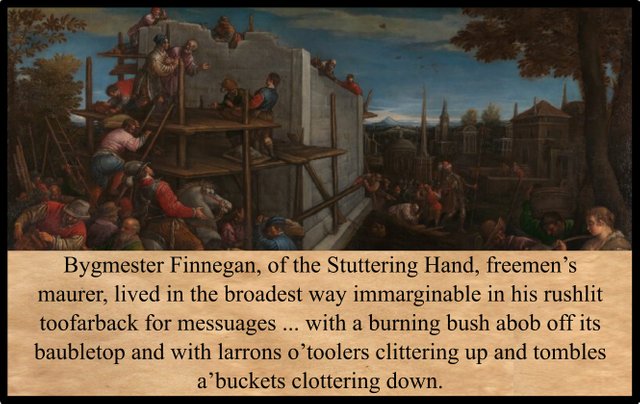
In the preceding article in this series, we saw that the four paragraphs of Finnegans Wake from
- RFW 004.09: Bygmester Finnegan, of the Stuttering Hand, freemen’s maurer, lived in
- RFW 005.40: head. Tee the tootal of the fluid hang the twoddle of the fuddled, O!
delineate a Viconian Cycle, after Giambattista Vico’s cyclical view of history, according to which human history passes through three phases before collapsing into the chaos of uncivilization, which ultimately leads back to the first phase and the beginning of a new cycle:
- Theocratic Phase, or the Age of Gods
- Aristocratic Phase, or the Age of Heroes
- Democratic Phase, or the Age of Men
- Collapse into chaos, and Ricorso, or Reflux
This three-plus-one pattern recurs constantly throughout the book. Finnegans Wake is a fractal work, in the sense that the large-scale structure of the book is repeated at lower and lower levels of the text. There are even individual sentences and phrases in which an entire Viconian cycle is expressed. So one should always be on the look-out for this pattern. Here Joyce is using the Viconian paradigm as a template for the popular ballad Finnegan’s Wake.
Of the first age, the Age of Gods, Vico remarked:
925 The first [governments] were divine, or, as the Greeks would say, theocratic, in which men believed that everything was commanded by the gods. This was the age of oracles, which are the earliest thing we read of in history...
929 The first [kind of language] was a divine mental language by mute religious acts or divine ceremonies ... This language belongs to religions by the eternal property that it concerns them more to be reverenced than to be reasoned, and it was necessary in the earliest times when men did not yet possess articulate speech. (Vico § 925, § 929)
Let us now take a closer look at the first of these four paragraphs, in which the protagonist of the book, HCE, is portrayed as a godlike creator of new worlds—a divine Tim Finnegan, if you like.
The most striking thing about this paragraph is the conflation of the old and the new, the ancient and the modern, the lofty and the lowly. Parallels are drawn between Finnegan’s personal history and the history of the Israelites, just as the Book of Invasions (a medieval corpus of Irish mythical history) models the prehistory of the Irish race on the Biblical history of the Israelites. The Biblical overtones are underscored by allusions to the first seven books of the Old Testament (the Heptateuch—seven has already been identified as a significant number in Finnegans Wake): Genesis, Exodus, Leviticus, Numbers, Deuteronomy, Joshua and Judges. Finnegan is compared to Moses: both made large bodies of liquid disappear and both had speech impediments (Exodus 4:10).
In Vico, the first age rises out of the ashes of the previous cycle. So it is not surprising to find some echoes in this paragraph of that decay: dung, addle, wither.
First Draft Version
It often helps to see what the first draft of a passage was like before Joyce buried it beneath layers of obfuscation. This particular paragraph began life as a surprisingly short and transparent passage:
Bygmister Finnegan, builder, lived on the broadest way imaginable and during mighty odd years this man of Hod made buildung upon buildung on the banks of the livers by the Soandso. He addle iddle wife and he hugged the liddle crathur wither tear tuck up your pardner. (Hayman 47)
The passage in parenthesis (one yeastyday ...) was added later, as was the second half of the paragraph (Oftwhile balbulous ...). This does not mean that these additions are not important, but they are probably not as important as the first-draft elements.
The Master Builder
Finnegan is described at once as a divine (this man of God) creator of great cities and as a simple family man who works on a building site. Ibsen’s Bygmester Solness was a builder of towers. HCE’s initials are encoded in the phrase hod, cement and edifices.
The Stuttering Hand sounds like the name of a pub—appropriate for a book that is set, after all, in the Mullingar House. In Finnegans Wake, HCE’s stutter is always a sign of his guilt. In the Durnal Version of the ballad, Tim Finnegan’s “hands did shake”. (Other versions have “His head felt heavy, which made him shake”, a reference to delirium tremens, or the “Irish Jig”, the uncontrollable shaking brought on by chronic alcoholism.) HCE shares a speech impediment with several of his counterparts in the book, most notable among whom are Lewis Carroll, Charles Stewart Parnell, and Moses. Later in this paragraph, Finnegan is described as balbulous, which combines both the English word bibulous (addicted to drinking) and the Latin word balbus (stuttering).
Tim Finnegan’s alcoholism informs much of this paragraph and there are several echoes of the popular song. In Genesis, Noah becomes intoxicated in the post-Diluvian world (the very water was evaporated), which was the setting for Vico’s first Age of the Gods.
Lord Willingdon
Finnegan is also described as freemen’s maurer. This continues the building theme: Maurer is the German for mason and bricklayer. In the first draft of this passage, Joyce wrote simply builder. But HCE is also being identified as a Freemason—German: Freimaurer. In Ireland, Freemasonry is associated with Protestantism. Freemasons are obsessed with sacred architecture, which is alluded to later in the word hierarchitectitiptitoploftical.
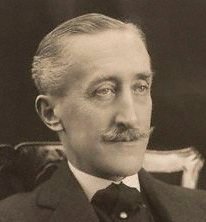
Freemen’s probably also alludes to Freeman Freeman-Thomas, 1st Marquess of Willingdon, a British politician who served as Governor General of Canada and Viceroy of India. Later, he will be conflated with the Duke of Wellington, an Irishman who also served in India.
Lord Willingdon was the Viceroy of India during the second and third Round Table Conferences, 1931-32, which were held in London to discuss constitutional reform in India. There may be a reference to these in the phrase roundhead staple near the end of the paragraph.
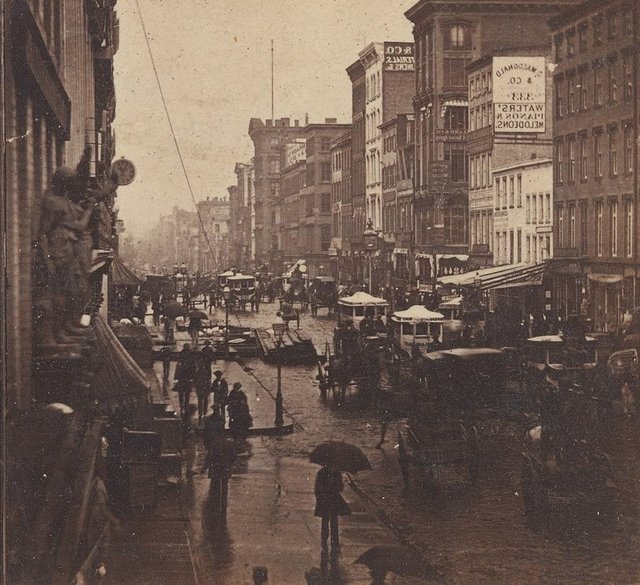
Broadway
In the ballad, Tim Finnegan lives in Walker Street, New York, which is not far from Broadway. Placing him on Broadway, however, connects him with Dublin’s streets broad and narrow. The pregnant phrase toofarback for messuages locates Finnegan in both space and time. The spatial elements include:
two pair back and passages: a standard rental unit in Dublin tenements, consisting of a single room at the back of a tenement on the second floor. The two pair refers to the two flights of stairs one must climb in order to reach the apartment, while passages refers to the appropriate access.
farback: in Dublin, this was slang for a house with two back rooms.
messuage: a dwelling house with its outbuildings and the adjacent land belonging to it.
But the phrase also implies that Finnegan lives so far back in the mythical past that messages from him cannot reach us. Or he lived in the days before there were cities or houses: according to Vico’s New Science, the earliest humans lived in caves. This is immediately reinforced by a passage in which the first seven books of the Old Testament—the Heptateuch—are named. But why does Joyce replace Leviticus with Helviticus? FinnegansWiki lists several possible reasons, but I don’t find any of them entirely satisfying. That is just the way things are when you read a book as obscure as Finnegans Wake: there are always going to be things that make little sense, even after you have reread them several times and researched them online.
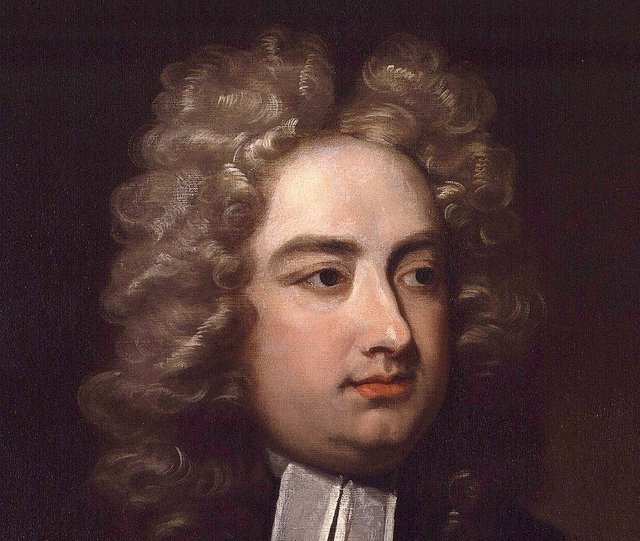
The passage in parenthesis, which describes Finnegan’s penchant for strong liquor, is replete with interconnecting allusions. Sterne and Swift refer to Laurence Sterne and Jonathan Swift, two Irish-born writers who figure prominently in Finnegans Wake. Sterne wrote Tristram Shandy, while Swift wrote A Tale of a Tub, both of which are key texts for Finnegans Wake. Concerning the latter, James Atherton made the following pointed observation:
Swift’s works are continually mentioned and are amongst the most noticeable features of the background of Finnegans Wake. Perhaps A Tale of a Tub is named most often. The allusion to it which was the first to be written is in the Anna Livia chapter [I.8] when one of the washerwomen says: ‘That’s what you may call a tale of a tub’ (212.21[RFW 166.33]). So it is possible that when it is named in other sections of the Wake the reference may be to the conversation of Joyce’s washerwomen as well as to Swift’s book. (Atherton 118)
It is significant that the phrase appears here in a passage describing Finnegan washing the features of his face. So it is very possibly meant as a pre-echo of that later passage in which two women wash HCE’s dirty linen in the Liffey.
In Finnegans Wake, Swift and Sterne are often yoked together, as they are here. Atherton again:
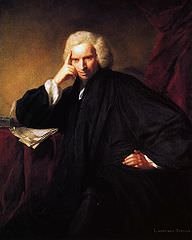
Another strange aspect of Joyce’s use of Swift remains to be discussed: this is the way in which Joyce uses the two names Swift and Sterne as if there were some close tie between them. Swift has Sterne as a doppelgänger whenever he is mentioned by his own surname ... But why—the question remains—does Joyce ‘mate authors’? [RFW 029.20] ... Various suggestions have been made as to the reason for this pairing. Mrs. Glasheen says that ‘Joyce felt that Sterne and Swift should have exchanged their names in order to describe their work properly’. Perhaps the connection is that when H. G. Wells reviewed A Portrait of the Artist as a Young Man he said that the book was ‘to be ranked with the works of Sterne and of Swift’. Joyce was very sensitive to criticism and Wells’s appreciation was one of the first laudatory reviews he ever received. Possibly Swift and Sterne stayed together in his mind for ever afterwards. (Atherton 122-123)
The explanation may simply be that Sterne shared a surname with John Sterne, Swift’s immediate predecessor as the Dean of St Patrick’s Cathedral.
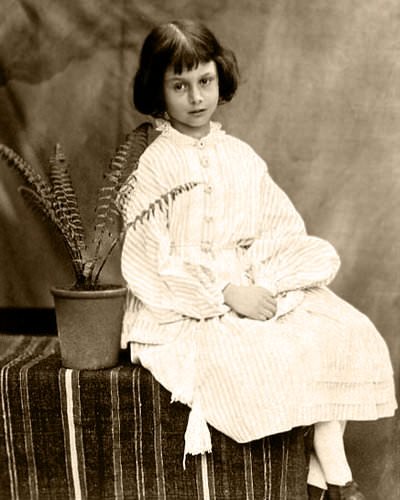
ALP
HCE’s wife, the female protagonist of the book, is ALP, or Anna Livia Plurabelle. If HCE is a personification of Dublin City, then ALP is a personification of the River Liffey—once known as Annie Liffey, after its Irish name Abhainn Life. But ALP appears in the book in many other guises as well. Here, the acrostic phrase addle liddle phifie—a ... l ... p—also refers to Alice Pleasance Liddell, the girl who inspired Lewis Carroll’s Alice’s Adventures in Wonderland. In another of Carroll’s works, Through the Looking-Glass, and What Alice Found There, the character of Humpty Dumpty makes an appearance. In Finnegans Wake he is used as a recurring symbol of the Fall of Man, and as a pertinent commentator on the use of language in the book. As he tells Alice:
‘Don’t stand there chattering to yourself like that,’ Humpty Dumpty said, looking at her for the first time, ‘but tell me your name and your business.’
‘My NAME is Alice, but—’
‘It’s a stupid enough name!’ Humpty Dumpty interrupted impatiently. ‘What does it mean?’
‘MUST a name mean something?’ Alice asked doubtfully.
‘Of course it must,’ Humpty Dumpty said with a short laugh: ‘MY name means the shape I am—and a good handsome shape it is, too. With a name like yours, you might be any shape, almost.’
...
... There’s glory for you!’
‘I don’t know what you mean by “glory,”’ Alice said.
Humpty Dumpty smiled contemptuously. ‘Of course you don’t—till I tell you. I meant “there’s a nice knock-down argument for you!”’
‘But “glory” doesn’t mean “a nice knock-down argument,”’ Alice objected.
‘When I use a word,’ Humpty Dumpty said in rather a scornful tone, ‘it means just what I choose it to mean--neither more nor less.’
‘The question is,’ said Alice, ‘whether you CAN make words mean so many different things.’
‘The question is,’ said Humpty Dumpty, ‘which is to be master—that’s all.’
Alice was too much puzzled to say anything, so after a minute Humpty Dumpty began again. ‘They’ve a temper, some of them—particularly verbs, they’re the proudest—adjectives you can do anything with, but not verbs—however, I can manage the whole lot of them! Impenetrability! That’s what I say!’ (Carroll 115-124)
Impenetrability! He could just as easily be describing Finnegans Wake.
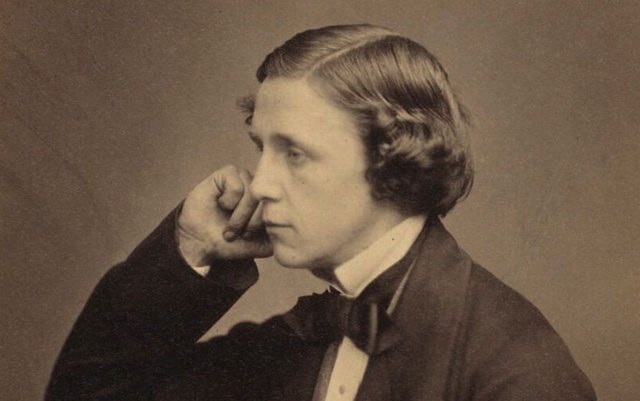
Laurence O’Toole and Thomas à Becket
Another important motif that is explored over and over again in Finnegans Wake is that of the warring brothers: Cain and Abel, Jacob and Esau, Romulus and Remus. They represent HCE and ALP’s twin sons Shem and Shaun. Joyce, however, is happy to use any two contrasted characters so long as there is something “fraternal” about their relationship—brothers-in-arms, fellow travellers, rivals, counterparts. Swift and Sterne comprise such a pair. St Laurence O’Toole and St Thomas à Becket comprise another.
Laurence O’Toole was the Archbishop of Dublin at the time of the Anglo-Norman invasion of Ireland (1169 ff). Thomas à Becket was the Archbishop of Canterbury around the same time. Both men were later canonised. Laurence O’Toole is now the patron saint of Dublin. As Adaline Glasheen noted:
[Laurence O’Toole] rose in favor with Henry II as St Thomas à Becket fell.
Hence: with larrons o’toolers clittering up and tombles a’buckets clottering down.
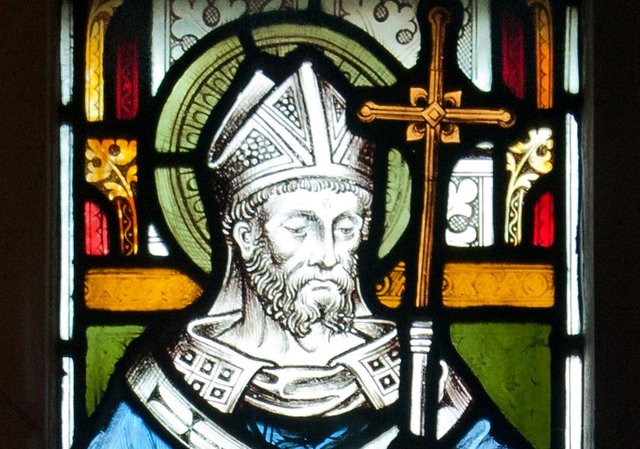
Lorcán Ua Tuathail, as he is known in Irish, was born in County Kildare. The year of his birth is uncertain, but according to some sources it was 1132, a significant number in Finnegans Wake, as we shall see later (Webb 426, Eblana 11). His father Maurice O’Toole was King of Uí Muiredaig, a minor sept in Leinster. As a young boy, Laurence spent two years as a hostage of Diarmait Mac Murchada, the King of Leinster, who treated him poorly. His half-sister Mór married Diarmait and bore him three children, including Aoife. Laurence was educated at the monastery of St Kevin in Glendalough, and later became the leader of the community. In 1162 he was appointed Archbishop of Dublin, the first in the city’s history.
In 1170, when the Norman army of Strongbow and Diarmait Mac Murchada besieged Dublin, Laurence was sent to parley with them on behalf of Asculf, the Norse-Gaelic king of the city. (Strongbow had only recently married Laurence’s niece and Diarmait’s daughter Aoife.) The negotiations, however, were cut short when two of Strongbow’s knights, Miles de Cogan and Raymond le Gros, breached the walls and took possession of the city. Asculf fled into exile, where he levied forces in the hopes of retaking the city.
The following year, Laurence rallied the Irish, urging them to expel the foreigners while they still had a realistic chance of doing so. He persuaded the High King of Ireland Roderick O’Conor to raise an army and they marched on Dublin. Before they arrived, the Normans routed Asculf’s forces outside the city walls. With death of Asculf, the Scandinavian Era of Dublin’s history (841-1171) came to an end and the Norman Era began.
Roderick’s siege of the city was unsuccessful. The following year, when Henry II visited his allies in Dublin, both Roderick and Laurence submitted to him. The remaining nine years of Laurence’s life were devoted to his clerical and political duties. He attended several councils as ambassador or mediator, both at home and abroad. The most notable among these were the Council of Windsor in 1175 and the Third Lateran Council in 1179. He died in Normandy—at Eu in 1180—on his way to confer with Henry, who was not pleased with his behaviour at the Lateran Council.
A significant biography of St Laurence O’Toole was written by John O’Hanlon, who appears in the Nausicaa episode of Ulysses as one of the concelebrants at Mary Star of the Sea Church in Sandymount.
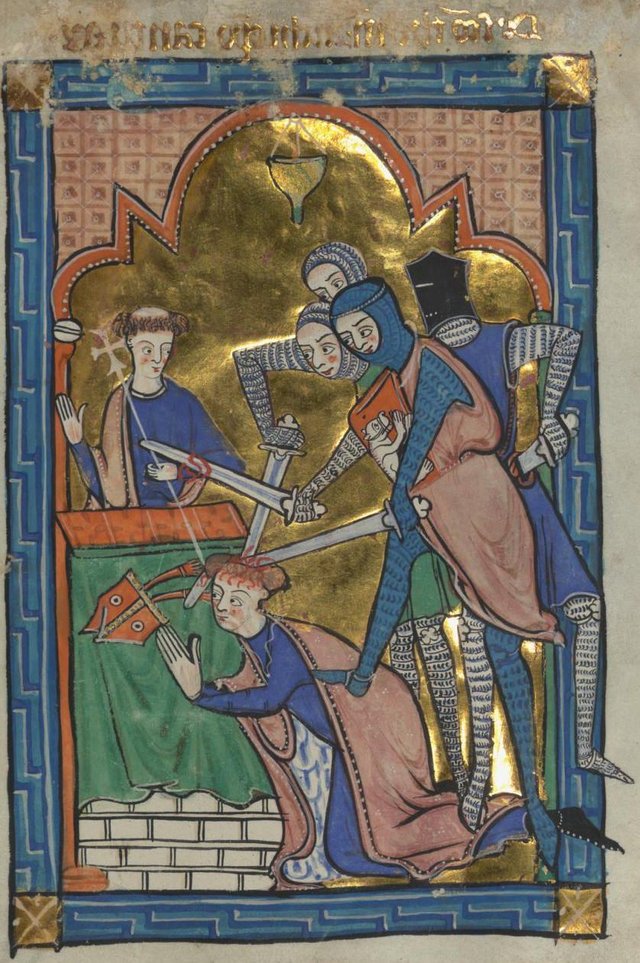
Thomas à Becket
Thomas à Becket was born in London around 1118 to parents of Norman extraction. He distinguished himself at the Council of Reims in 1148, and in 1155 he was appointed Chancellor of England by Henry II, a post he purchased rather than merited. He developed a close relationship with the King, becoming the latter’s mentor and possibly also the guiding hand of the affairs of state. In 1162 he was appointed Archbishop of Canterbury, making him the primate of All England.
If Henry hoped that Thomas would continue to place state matters above those of the Church, he had sorely misjudged him. Thomas’s appointment marked the beginning of a rift between the two, as Becket found himself again and again opposing Henry’s policies. Things came to a head over the Sixteen Constitutions of Clarendon, a set of legislative procedures designed to curb the independence of the clergy and the power of Church of Rome in England. Thomas opposed them, but was eventually compelled to accept them. In 1164, when he tried to go to France without permission, he was arrested and tried on what appear to be trumped-up charges. He eventually succeeded in escaping into exile in disguise. In 1166, from the safety of the France, he threatened Henry with excommunication.
By 1169 tempers had cooled, and when Henry and Louis VII were in conference at Montmirail, Thomas presented himself, fell at Henry’s feet, and offered to be reconciled to him. But Henry was not so easily appeased and rejected the offer. Protracted negotiations ensued, and by the end of the year an agreement had been hammered out which would allow Thomas to return to England and be reinstated in the king’s favour. But the following summer, before any of this could take place, Henry had his young son, Henry the Young King, crowned by the Archbishop of York, Roger de Pont L’Évêque. This was taken as a deliberate insult to Thomas and the Papacy, as coronations were traditionally carried out by the Primate. Pope Alexander III responded by suspending Roger and all those bishops who took part in the coronation, the most notable of whom were the Bishops of London and Salisbury.
Thomas landed in England in December 1170 and repaired to Canterbury to resume his duties, but the coronation controversy would not go away. On his arrival at Canterbury, he was met some of the king’s officers who demanded the immediate and unconditional absolution of the suspended bishops. Thomas offered to absolve the Bishops of London and Salisbury if they swore obedience to the Pope, but insisted that only Alexander could absolve Roger. The three bishops went abroad to appeal directly to the king.
On 29 December, when Thomas was performing his sacred ministry at Canterbury, he was visited by four knights, Hugh de Morville, William de Tracy, Reginald Fitzurse and Richard le Breton. They demanded in the name of Henry, from whose court they had come, that he absolve the three bishops. Thomas repeated his former reply. A violent altercation ended with the withdrawal of the knights, but they returned shortly at the head of an armed force. Thomas and his attendants sought sanctuary in the cathedral. The knights burst in, accompanied by the clerk Hugh of Horsea, and they again bade Thomas absolve the bishops. He again refused. They tried to drag him out of the cathedral, but failing, they struck him down where he stood. Thomas was canonised by Alexander in 1173. The following year, Henry did penance at his tomb for the murder.
Becket and O’Toole
In their Skeleton Key to Finnegans Wake, Joseph Campbell and Henry Robinson make the following pointed observation:
In Joyce’s text, the phrase “with larrons o’toolers clittering up and tombles a’buckets clottering down” refers to Laurence O’Toole and Thomas `a Becket, bishops respectively of Dublin and Canterbury in the time of Henry II. The former advanced his personal career, the latter was martyred. (Campbell et al, 38 fn)
Laurence began as an Irish nationalist and opposed Henry, but finally bent the knee and prospered : Thomas began as Henry’s champion, but finally opposed him and died for it.
Thomas died after the Anglo-Norman Invasion of Ireland had begun but before Dublin had been captured. Did he ever meet Laurence? It is unlikely. An interesting story, however, is told about Laurence that ties the two men together. In 1175, O’Toole participated in the negotiations that led to the Treaty of Windsor—a pact between Henry II and Roderick O’Conor. During the conference, while Laurence was saying Mass at the shrine of St Thomas in Canterbury Cathedral, he was attacked by a madman, who thought the church needed a new martyr:
On one of Laurence’s visits, a madman, hearing that the Archbishop of Dublin was commonly reputed to be a Saint, thought that it would be an act of virtue to make a martyr of him, and that he would be performing a great service for God and the Church. One day, therefore, when the Saint, clothed in his episcopal vestments, mounted the altar to celebrate the holy mysteries in the Church of the Holy Trinity, where St Thomas, Archbishop of Canterbury and martyr, was buried, the madman struck him such a blow on the head with his staff that he fell to the ground as though dead. The place immediately erupted with the cries and lamentations of Laurence’s assistants. The local clergy, who had joyfully welcomed him into their house, considering themselves blessed to be visited by so holy a man, rushed to his assistance. The holy bishop, having regained consciousness, called for water. He blessed it with the Sign of the Cross, and recited the Lord’s Prayer over it. Then he asked that his wound be washed with it. As soon as this was done, he was completely healed and was able to celebrate Solemn Mass as though nothing had happened. However, the blow left a scar which he retained for the rest of his life. A large fracture could still be seen on his cranium which ought to have killed him. The King condemned the madman to be hanged, but the Saint interceded on his behalf and he was pardoned. (Guérin 404-405)
The Church of the Holy Trinity in Canterbury Cathedral, which houses the Shrine of St Thomas, was actually constructed in the 1180s, after the death of Laurence, so Guérin’s account should perhaps be taken with a grain of salt.
In The Fable of the Mookse and the Gripes, which Shaun recounts in I.6 (The Quiz), the lives of Thomas à Becket and Laurence O’Toole are entwined with the Papacy of Alexander’s predecessor Pope Adrian IV. Adrian was an Englishman, Nicholas Breakspear, and he played a crucial role in instigating the Anglo-Norman Conquest of Ireland.
References
- Thomas Goddard Bergin, Max Harold Fisch, The New Science of Giambattista Vico, Translated from the Third Edition (1774), Cornell University Press, Ithaca NY (1948)
- Joseph Campbell, Henry Morton Robinson, Edmund L Epstein (editor), A Skeleton Key to Finnegans Wake, New World Library, Novato CA (2005)
- Lewis Carroll, Through the Looking-Glass, and What Alice Found There, Macmillan & Co, London (1872)
- Eblana (Teresa J Rooney), St Laurence O’Toole and His Contemporaries, M H Gill & Son, Dublin (1881)
- Paul Guérin, Les Petits Bollandistes: Vies des Saints, Volume 13, 28 October – 30 November, After Les Bollandistes, Bloud et Barral, Paris (1876)
- James Joyce, Finnegans Wake, The Viking Press, New York (1958, 1966)
- Sidney Lee (editor), Dictionary of National Biography, Volume 42, Smith, Elder & Co, London (1895)
- John O’Hanlon, The Life of St Laurence O’Toole, Archbishop of Dublin, John Mullany, Dublin (1857)
- Danis Rose, John O’Hanlon, The Restored Finnegans Wake, Penguin Classics, London (2012)
- Giambattista Vico, Goddard Bergin (translator), Max Harold Fisch (translator), The New Science of Giambattista Vico, Cornell University Press, Ithaca NY (1948)
- Alfred Webb, A Compendium of Irish Biography, M H Gill & Son, Dublin (1878)
Image Credits
- The Tower of Babel: Wikimedia Commons, Leandro Bassano (painter), Public Domain
- Lord Willingdon: Wikimedia Commons, Henry Walter Barnett (photographer), Public Domain
- Broadway, New York: Wikimedia Commons, Henry T Anthony & Edward Anthony (photographers), Public Domain
- Jonathan Swift: Wikimedia Commons, Charles Jervas (painter), Public Domain
- Laurence Sterne: Wikimedia Commons, Joshua Reynolds (painter), Public Domain
- Alice Pleasance Liddell: Wikimedia Commons, Lewis Carroll (photographer), Public Domain
- Lewis Carroll: Wikimedia Commons, Lewis Carroll (photographer), Public Domain
- Laurence O’Toole (Christ Church Cathedral): Wikimedia Commons, © Andreas F Borchert, Creative Commons License
- The Martyrdom of Thomas à Becket: Carrow Psalter, Anonymous, 13th Century, © The Walters Art Museum, Creative Commons License
Useful Resources
- Joyce Tools
- FWEET
- The James Joyce Scholars’ Collection
- FinnegansWiki
- Annotated Finnegans Wake (with Wakepedia)

It is an extraordinary writing a great writer with very good works and you share it with us friend thanks for such good post greetings..my dear friend. @harlotscurse
@sadkitten is countering 50% of @timuann self-votes for 1 week starting Friday, September 7th 2018 because it is part of last weeks top self-voters. For more details see this post.
Excellent post good article really your all post well I like your all post thanks for sharing with us dear friend @harlotscurse
Resteemed and Upvote
A great writer u are buddy. Love to read yur post daily.